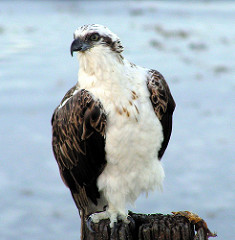
Country of origin: England
Year came to U.S.: 1939
Education: Biology and Naval Architecture, University of London
Organization: Environmental Defense Fund (1967)
Headquarters: New York, NY
2023 revenue: $255 million
Worldwide employment: 1,000+

Puleston was a daredevil and nature-lover who helped design the famous “Duck” boat.
His successful campaign against the use of DDT-laden insecticides spread worldwide and birthed the Environmental Defense Fund.
Biography
Dennis Puleston was an adventurer in the truest sense of the word.
At age 25, he left his sleepy English fishing village of Leigh-on-Sea and set out for a six-year, round-the-world odyssey. He ran a coconut plantation in the Caribbean, dined with cannibals and was kidnapped by armed natives in the South Pacific. All of this was documented in his book Blue Water Vagabond, which was published in 1939, the same year he married and settled in Long Island, New York.
In his new homeland, Puleston immediately put his nautical proclivities to work by designing the DUKW amphibious landing craft, commonly called the Duck, for which he was awarded the Medal of Freedom by President Harry S. Truman. Ducks were used in military campaigns like the Normandy landing and endure today in cities around the world, taking tourists on land and sea tours.
Puleston was also interested in ornithology and began studying osprey colonies off Long Island. He discovered that dichloro-diphenyl-trichlorethane (DDT), which was used to kill mosquitoes in the area, was also killing off un-hatched ospreys.
Puleston joined a campaign against the use of DDT. Using what was then a novel approach to environmental activism, he and colleagues Art Cooley and Charlie Wurster sued the Suffolk County Mosquito Control Department in New York and secured a year-long ban on DDT spraying.
Almost immediately, Puleston was inundated with environmental protection requests from across the country. He, Cooley and Wurster then founded the Environmental Defense Fund (EDF) in 1967 to protect humans and wildlife from DDT.
Three years later, New York state banned most uses of DDT. In 1972, the ban spread nationwide and in various countries across the globe. Most of the affected wildlife made the recovery that Puleston had hoped for.
Today, EDF continues its mission to preserve the Earth’s natural systems by combating serious environmental problems with practical solutions supported by more than 1.5 million members, a staff of 700 scientists, economists, policy experts and other professionals around the world, and cutting-edge collaborations with businesses and governments like its Google Earth Outreach project.
Updated September 2024
